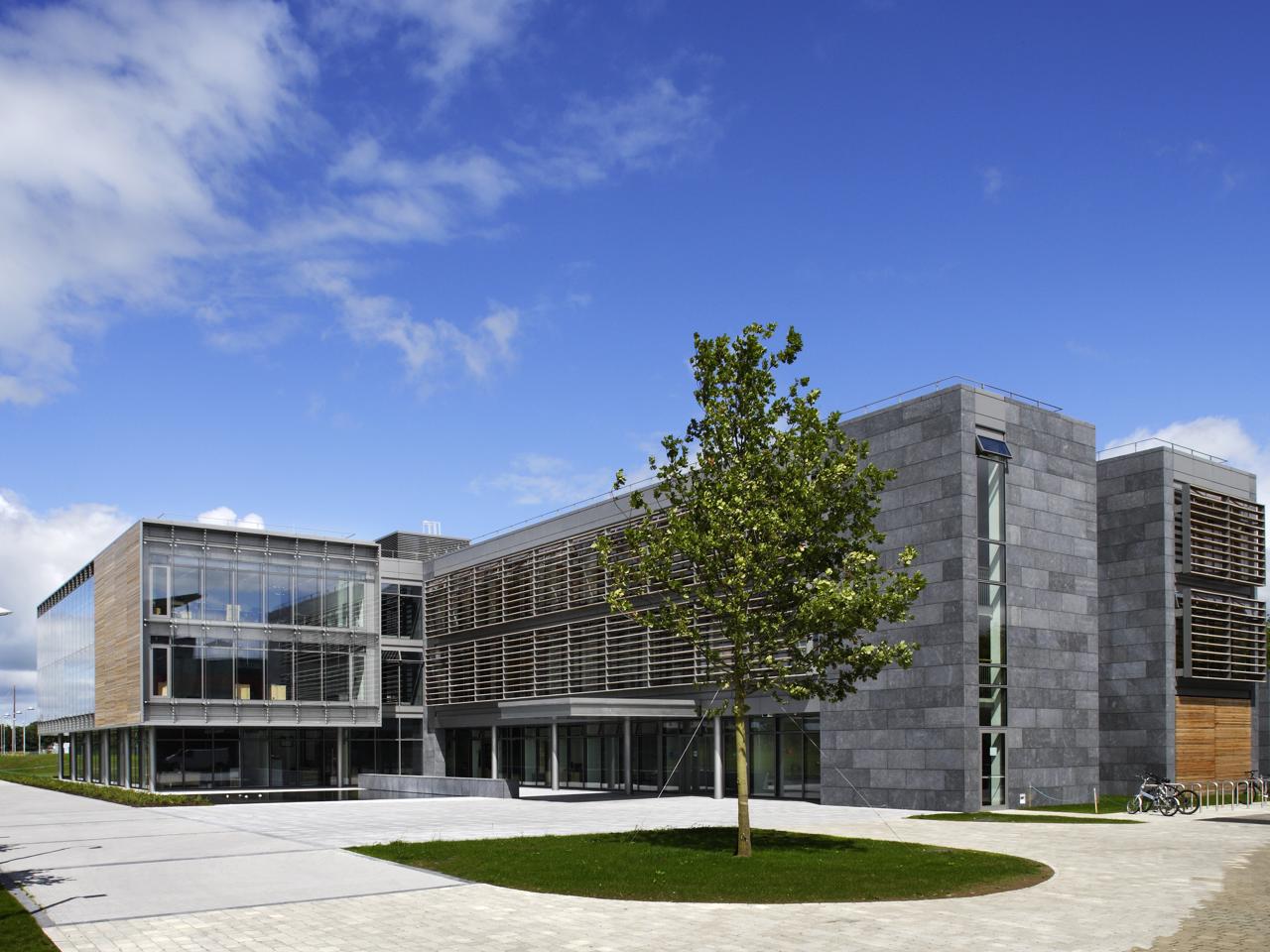
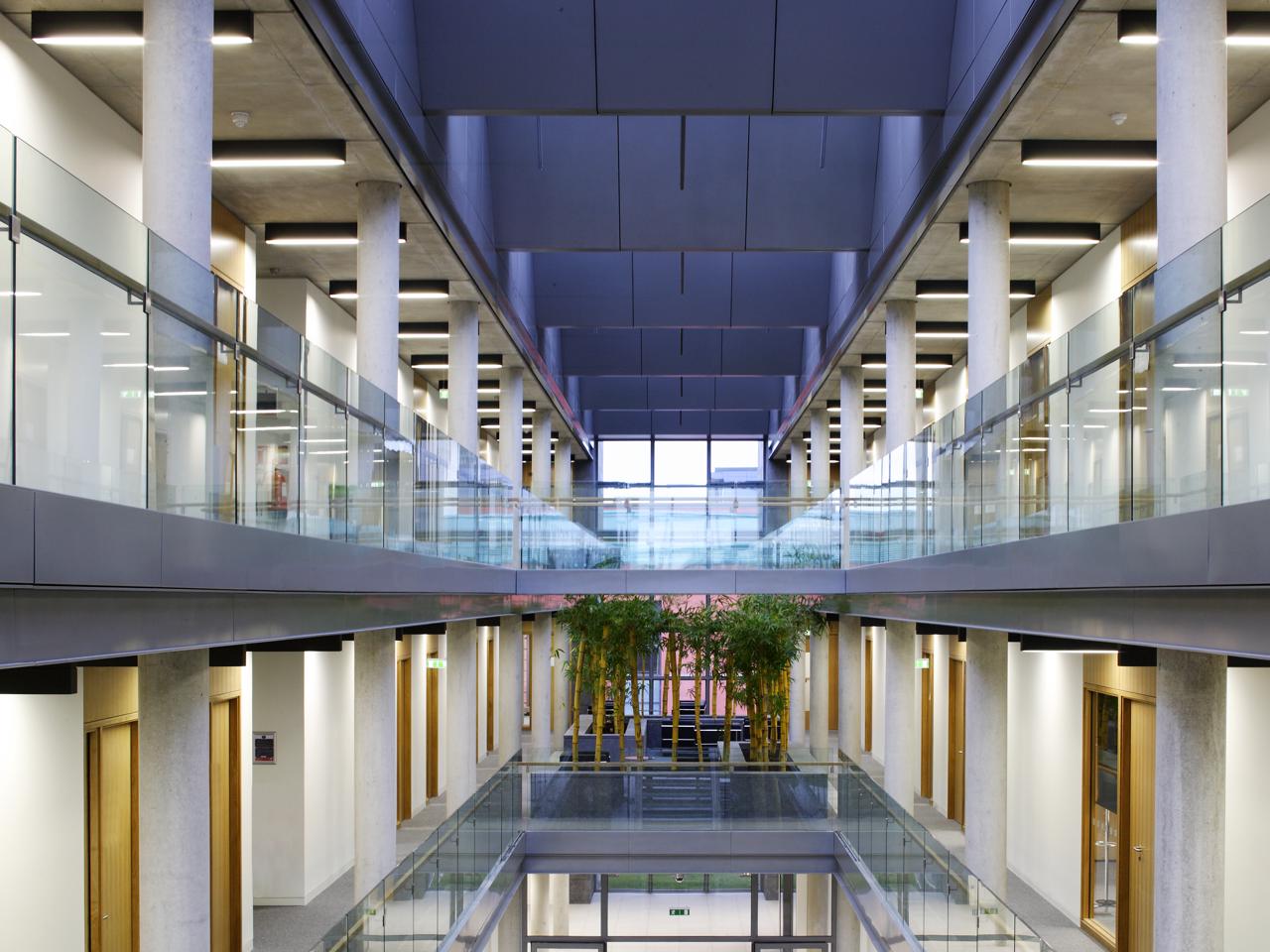
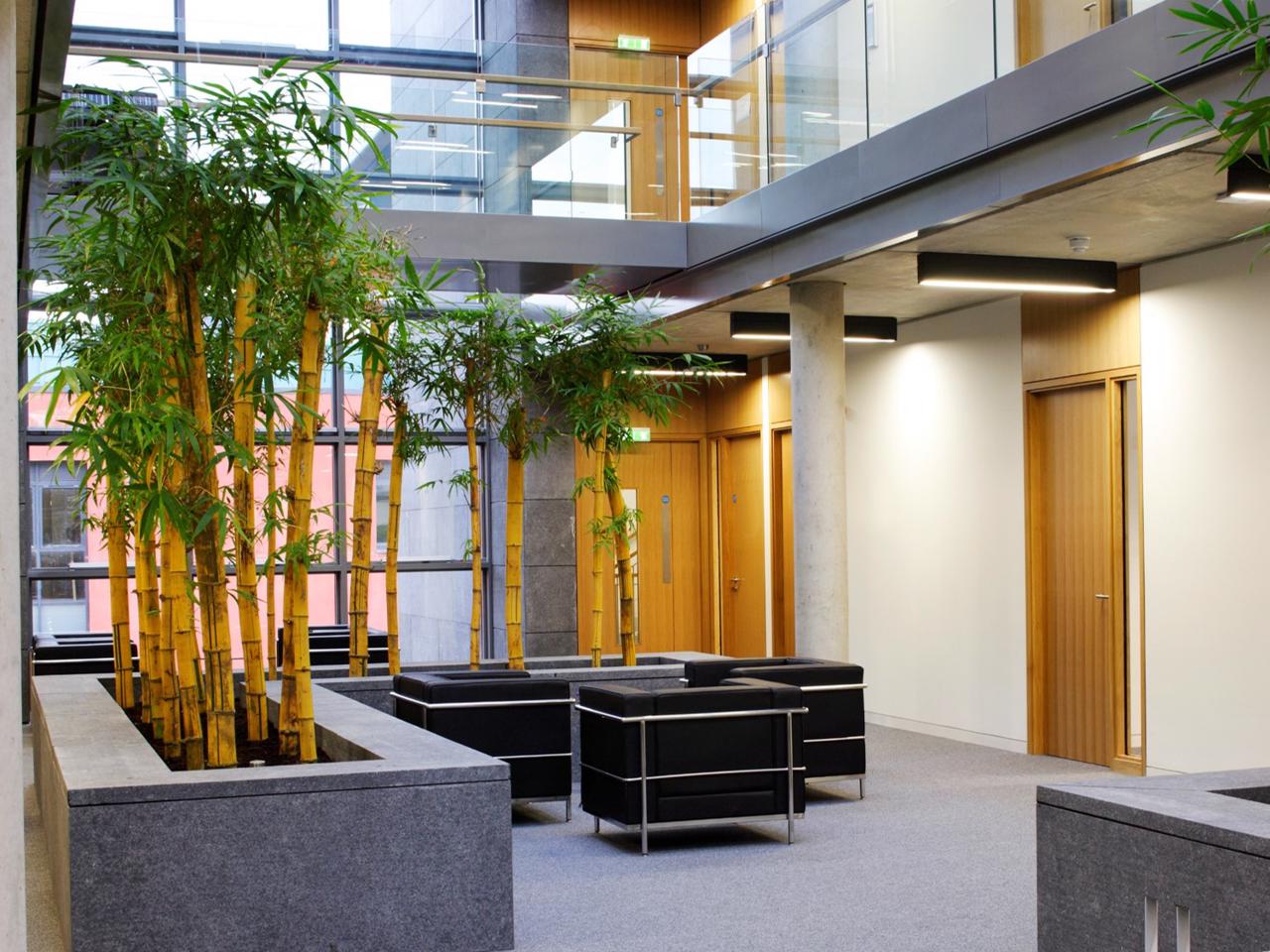
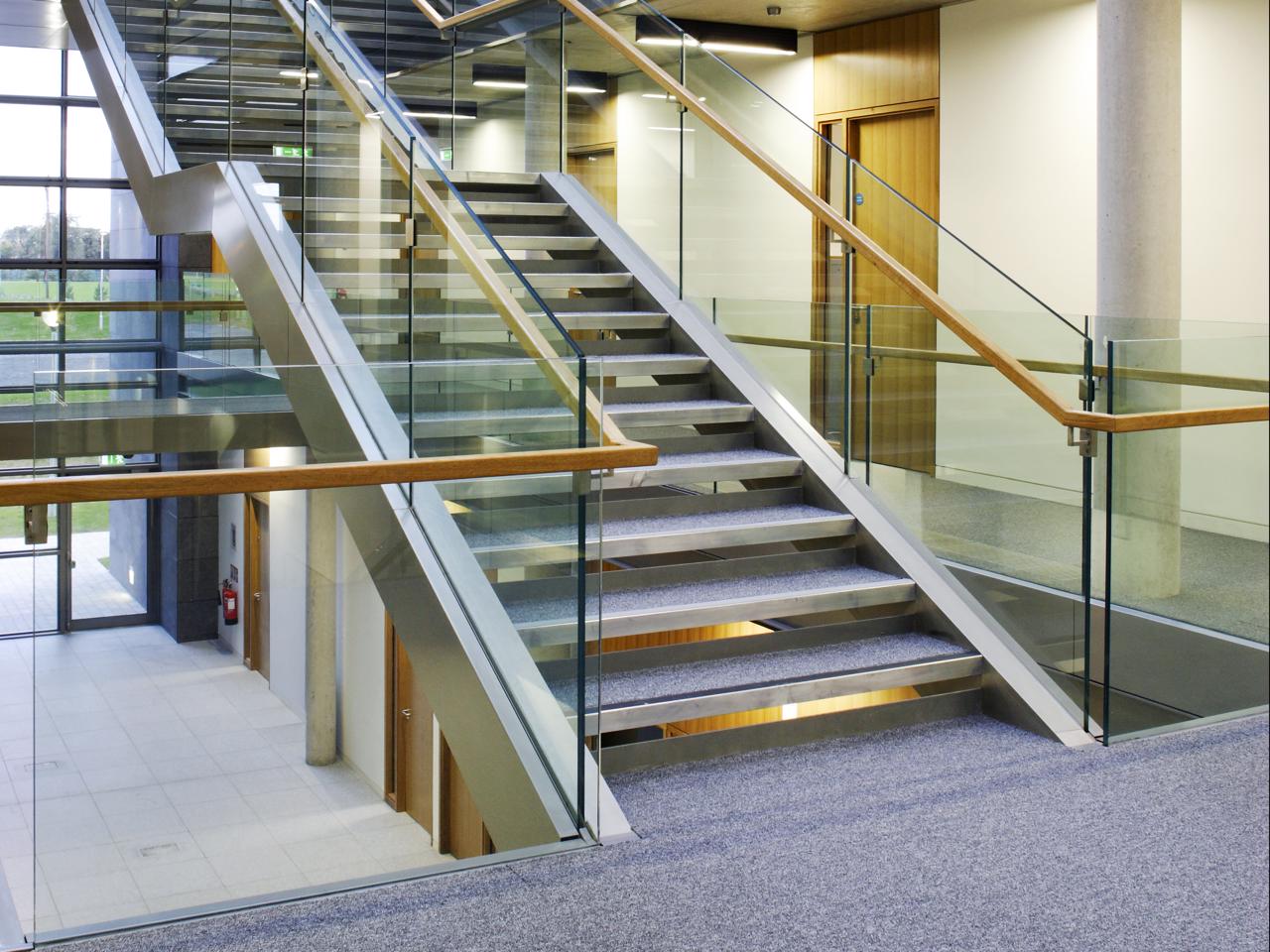
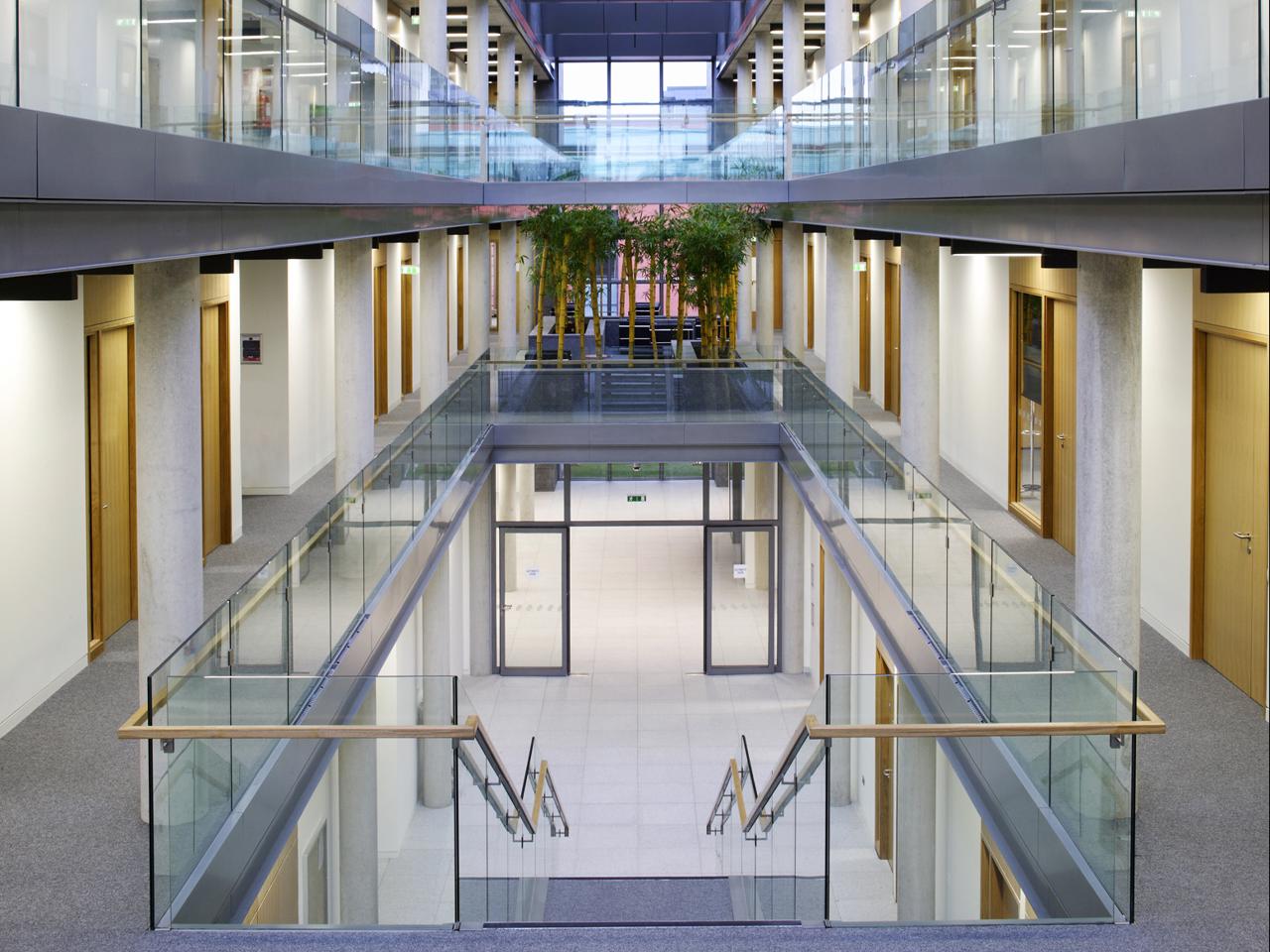
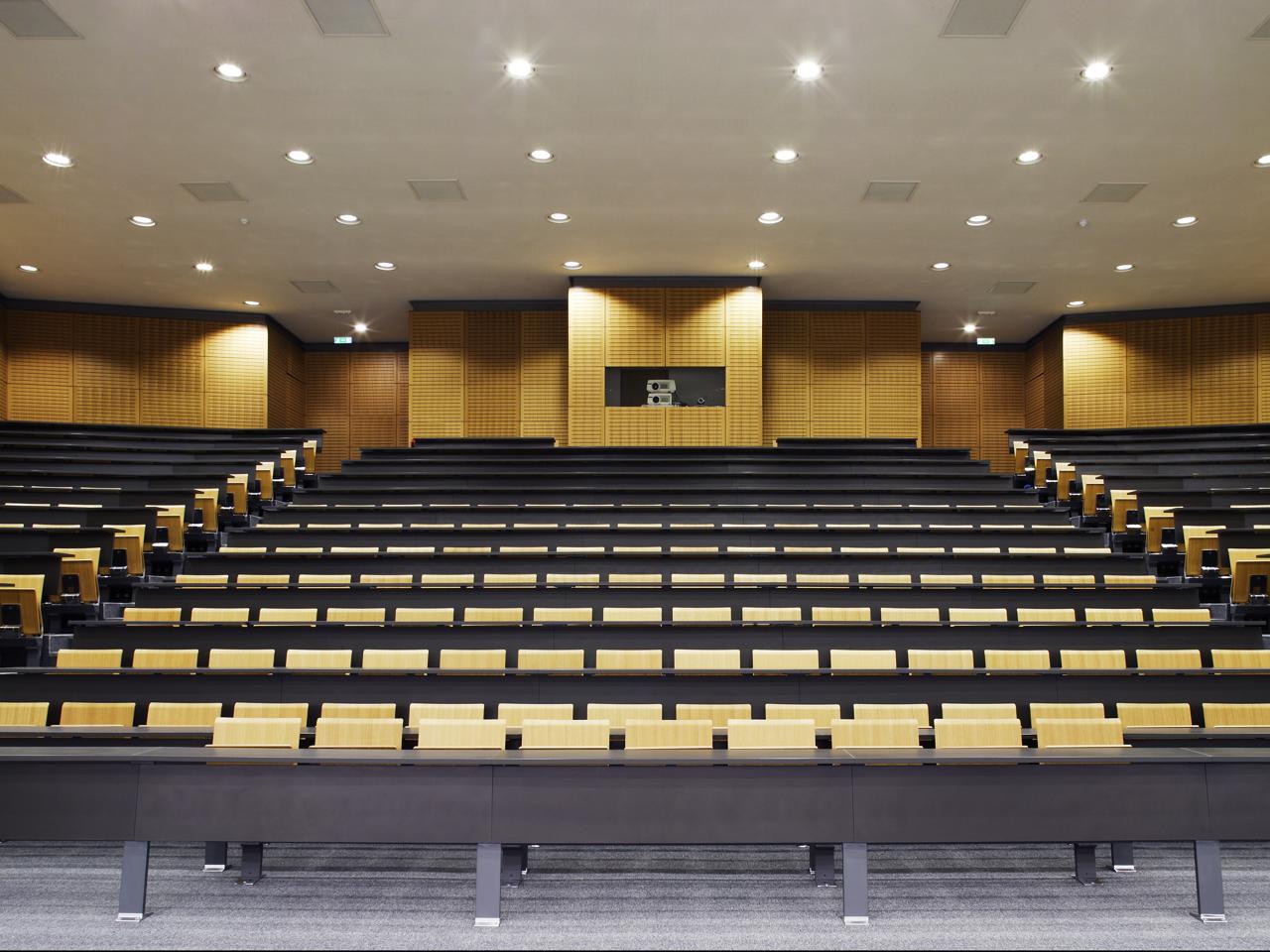
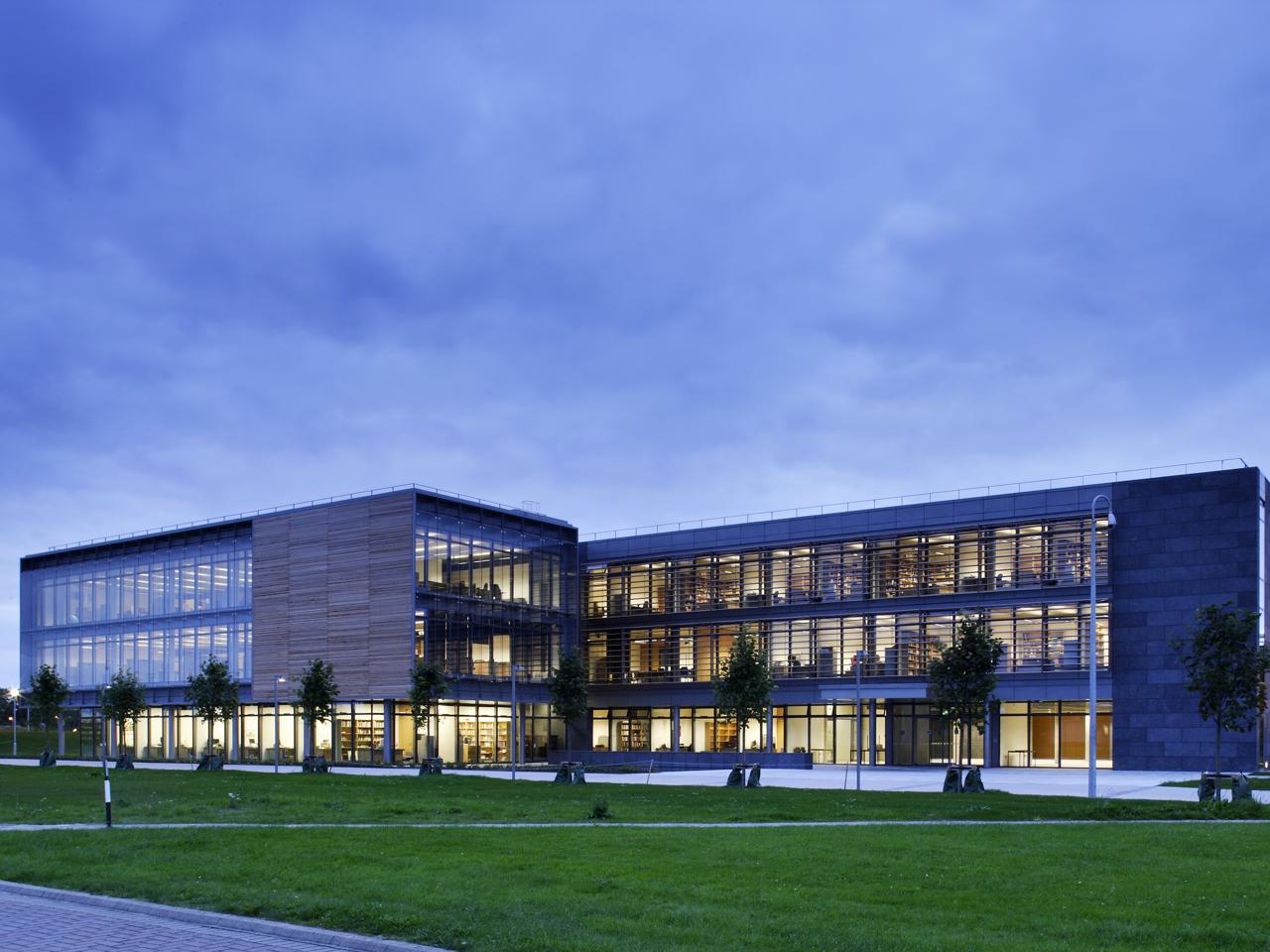
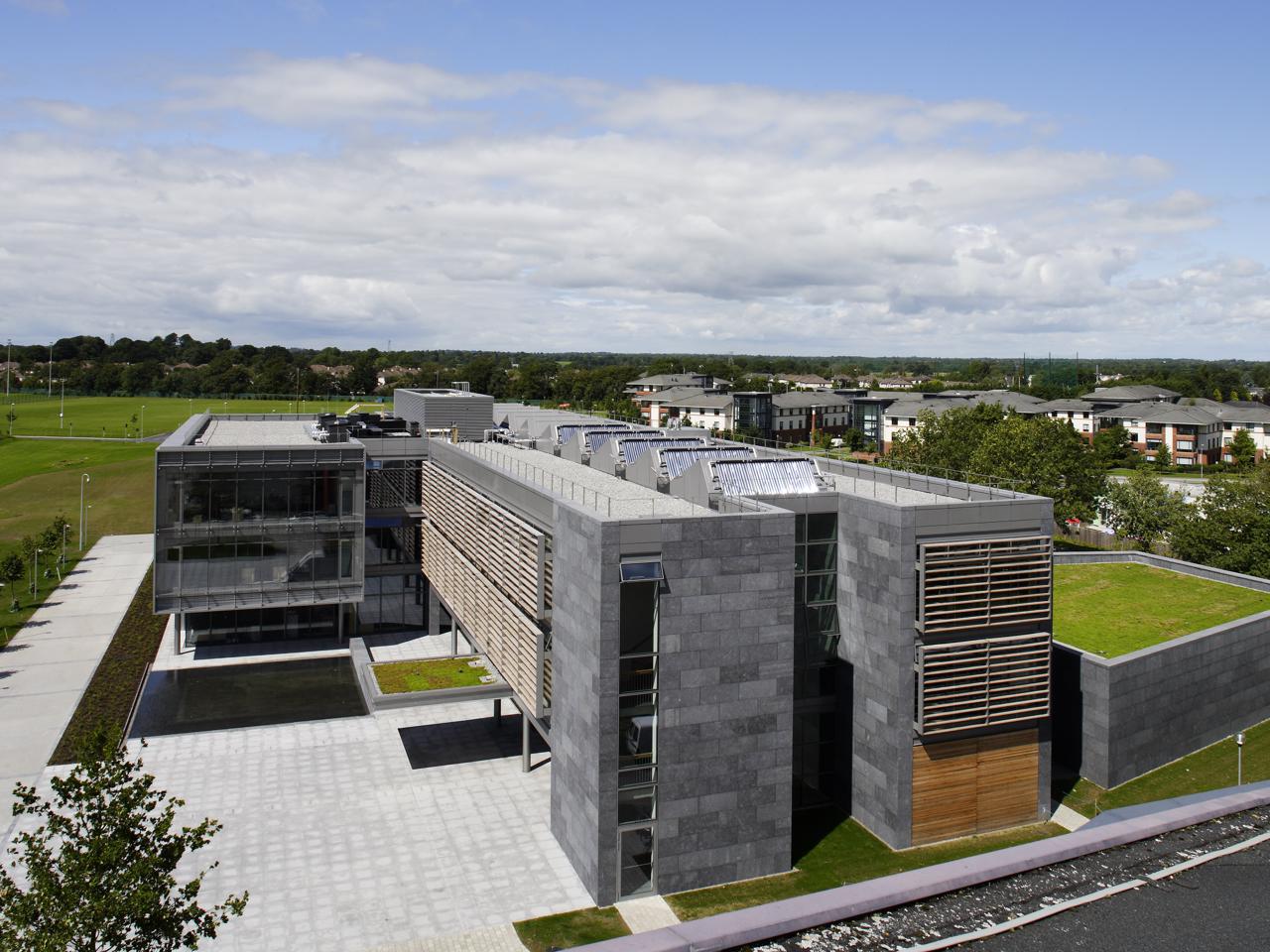
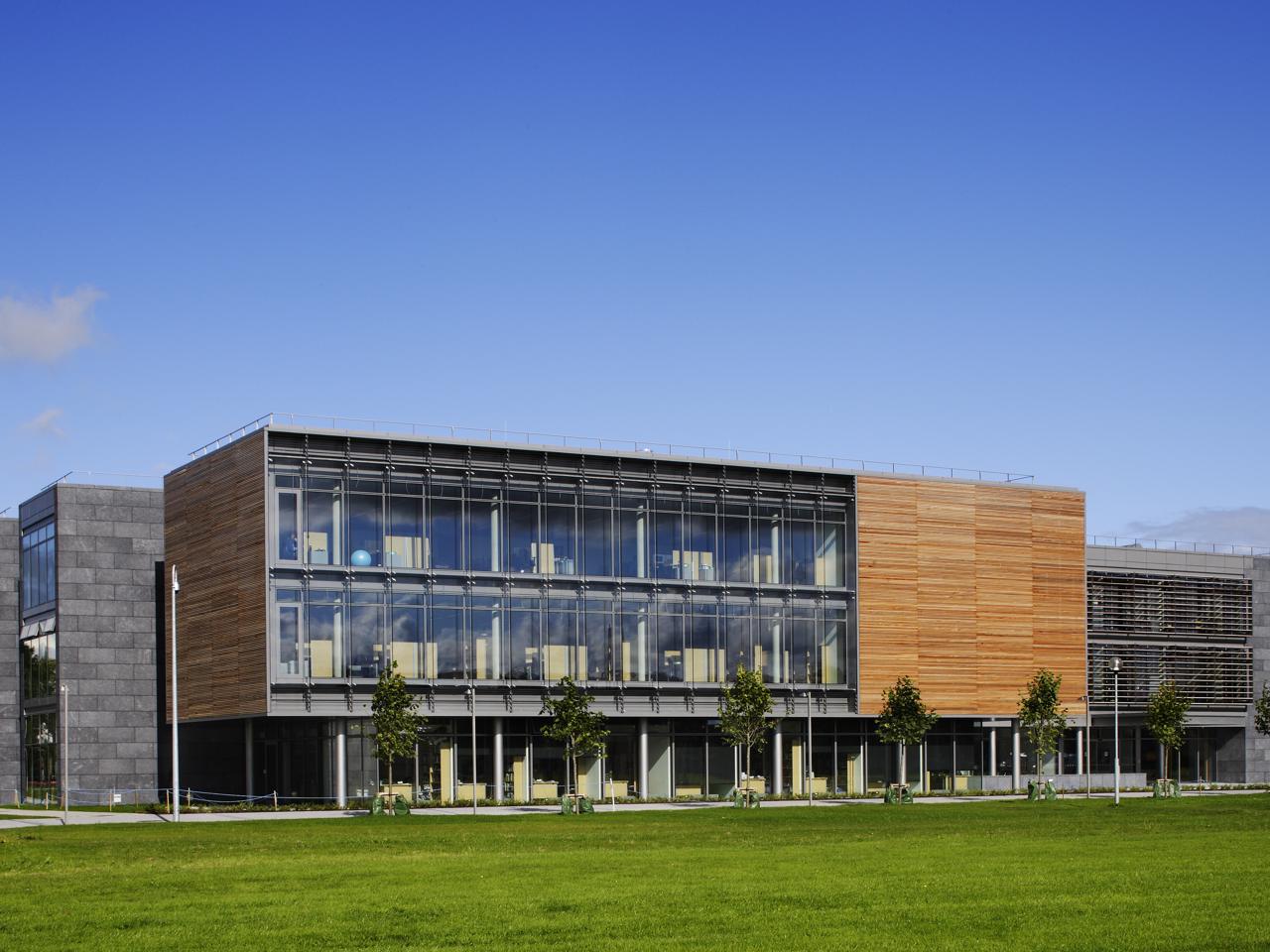
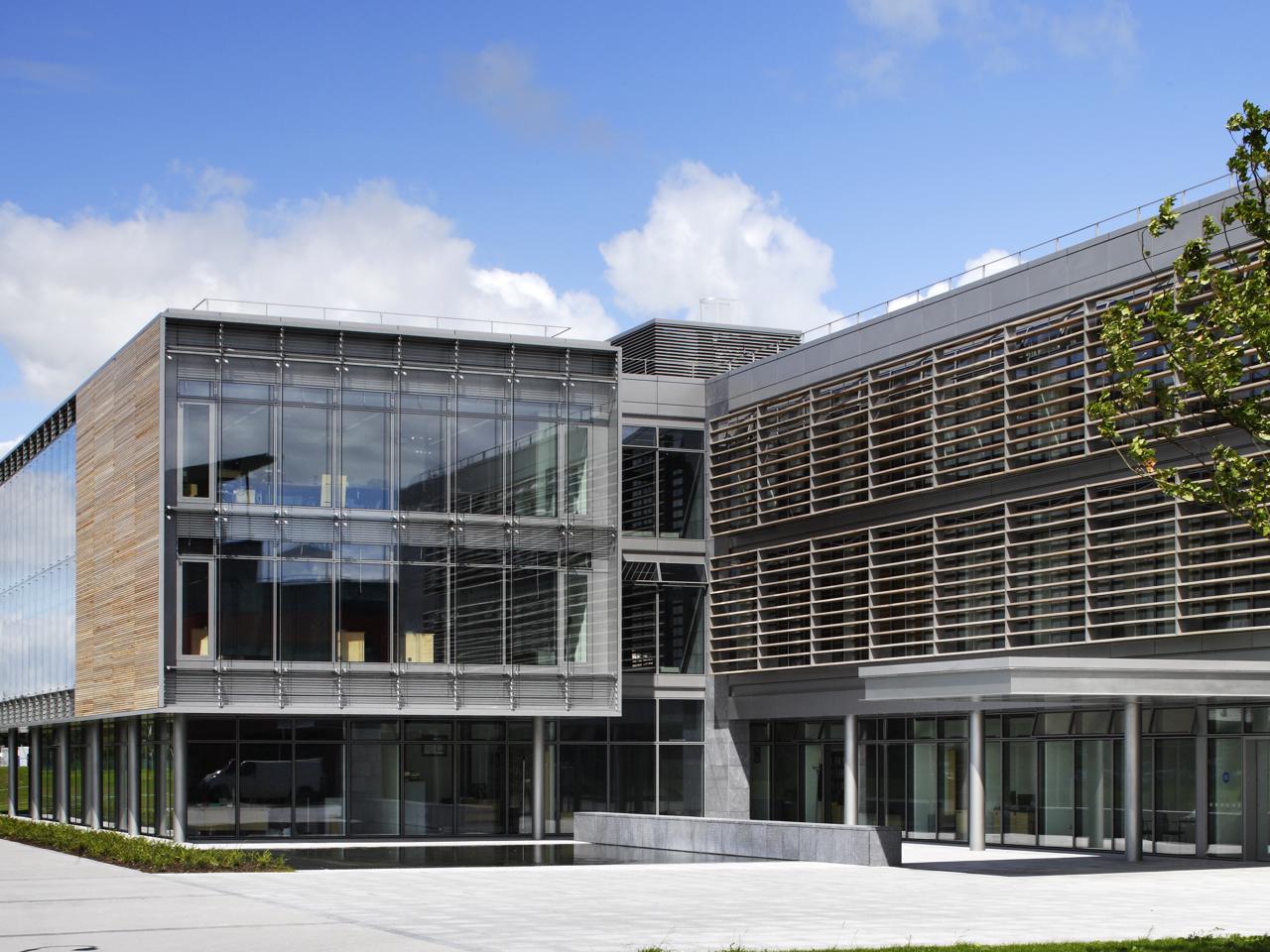
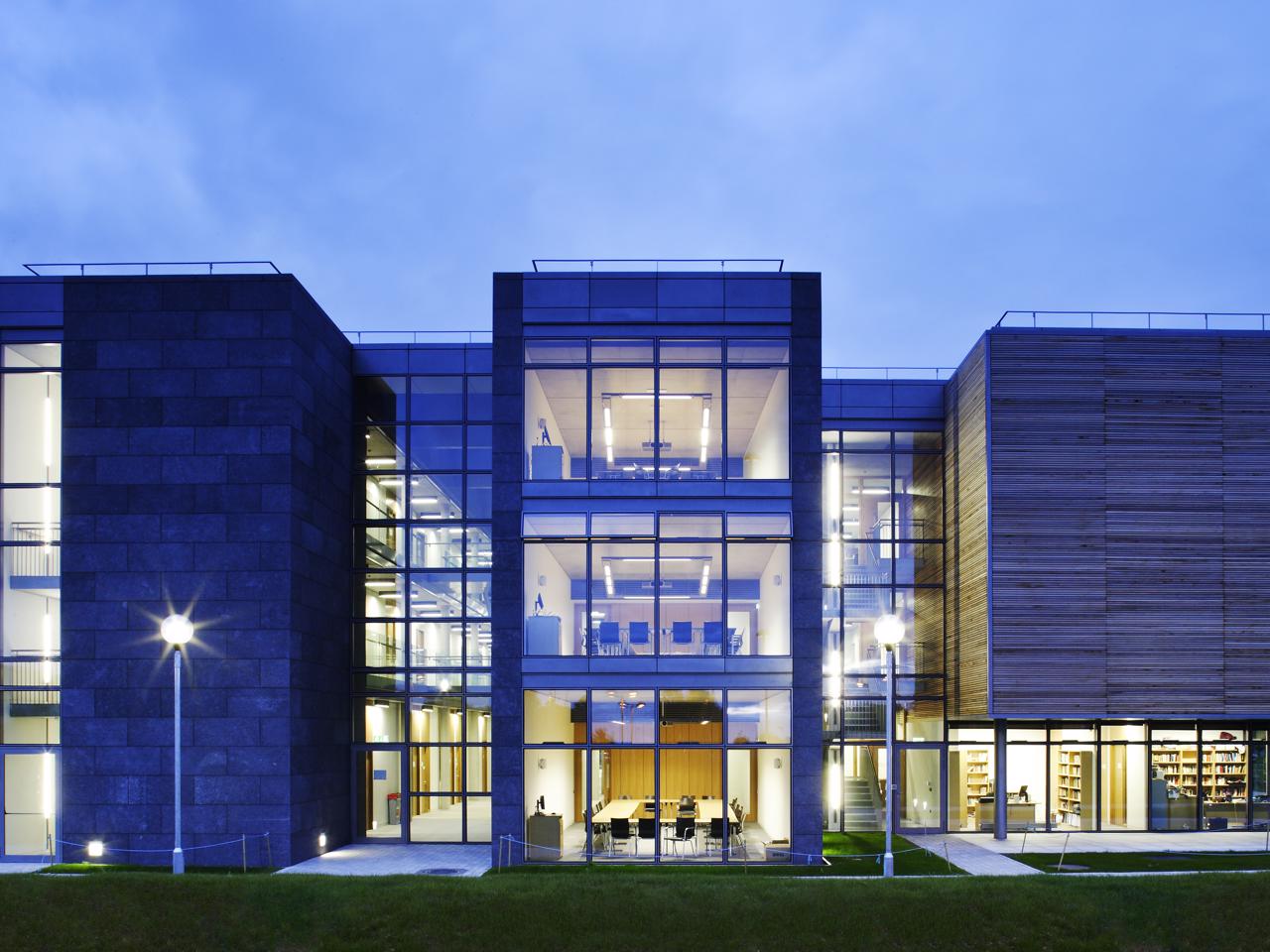
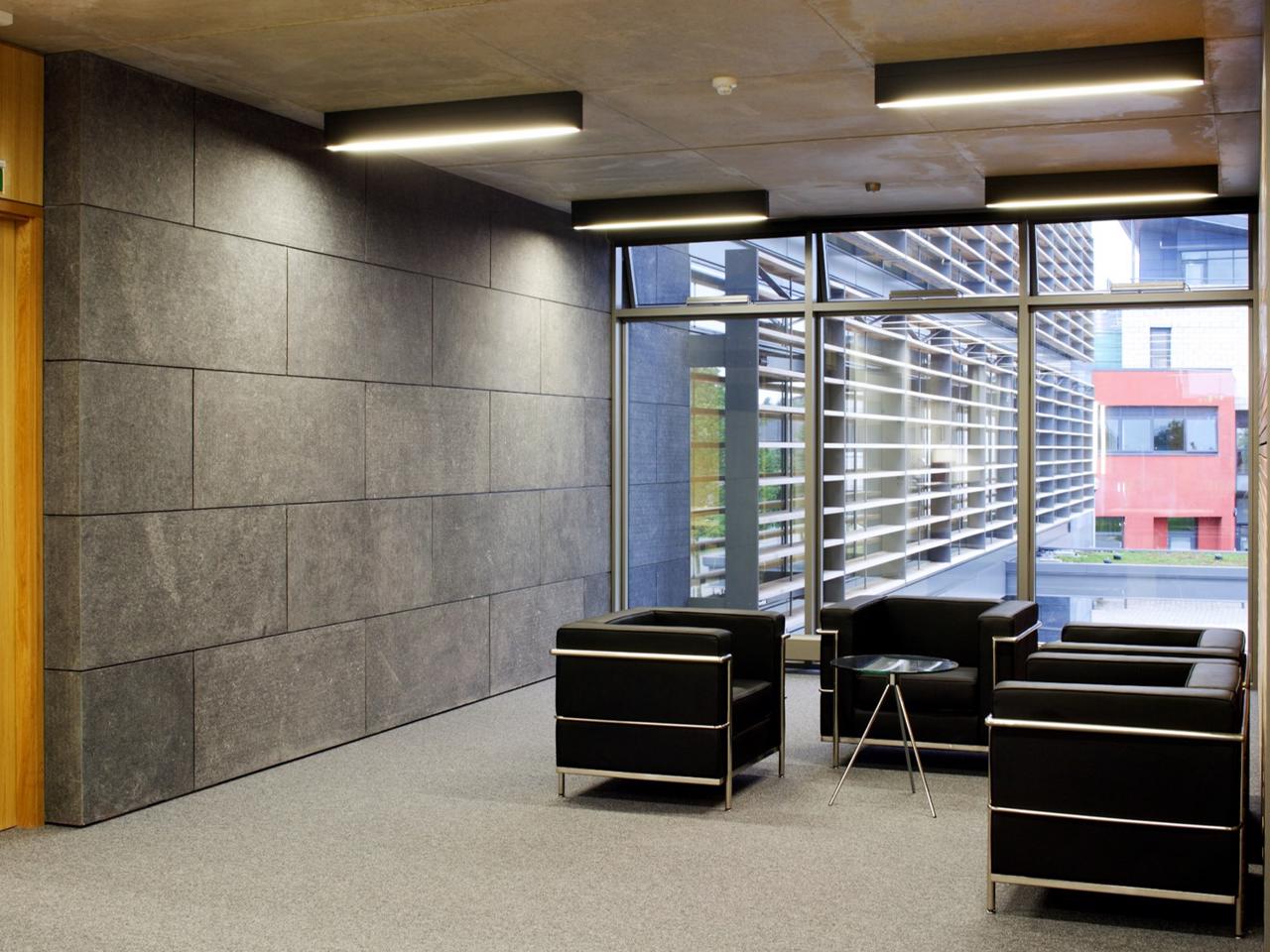
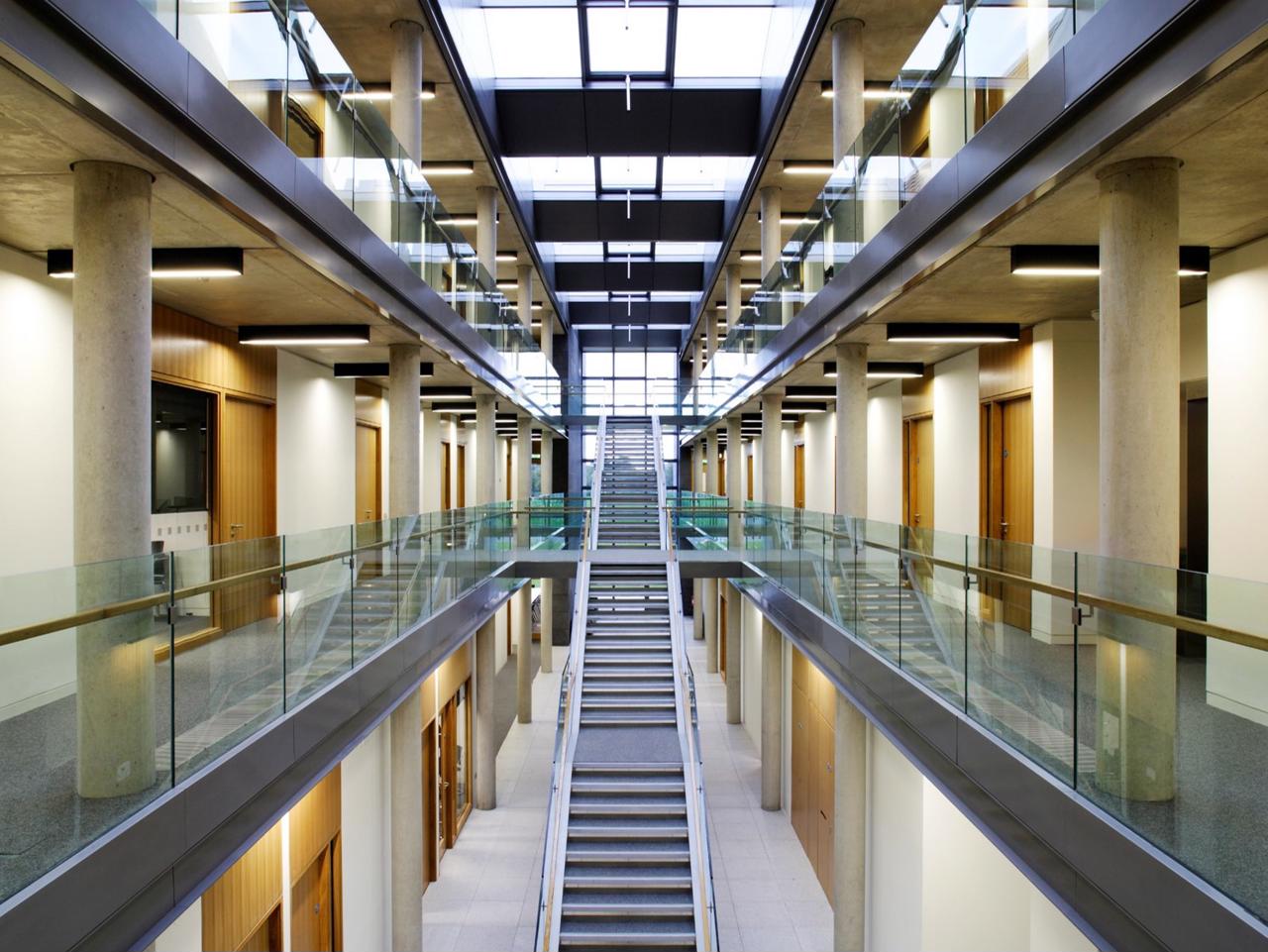













OPUS Award
PLAN Expo
0
Best Educational Building
Royal Institute of the Architects of Ireland
0
Client
NUI Maynooth
Location
Maynooth, Ireland
Status
In Use
Area
4500
The 4,600 sq.m teaching and research building is laid out around a three-storey concourse runs north/south and contains the cellular office spaces. Forward of this, a projecting elevated element contains larger open spaces and forms the entrance forecourt. The entrance serves all users of the building, with a large undergraduate lecture theatre on its axis.
Three materials are used in the building envelope. Irish limestone reflecting the ecclesiastical buildings on the South Campus; glass in natural aluminium frames and natural cedar used as sun shading and cladding to the projecting element.
The entrance foyer is not just an architectural set piece but a hugely valuable multi-functional space, providing a break-out area between lectures for casual learning and staff and student interaction, a venue for receptions and exhibitions, and is easily adapted for use as an examination hall.
A prominently located 350 seat lecture theatre is also a resource for the wider university community.
The building is a model of low energy design. STW’s holistic design considered orientation, disposition of glazing and shading, thermal mass and natural ventilation through the atrium and double-skin facades to optimise the passive energy performance of the building.
Natural ventilation and exposed ECO-CEM concrete soffits obviate the need for mechanical cooling. Heat recovery is used and hot water is generated by solar evacuated tubes located on the North lights of the concourse. Green roofs minimise water attenuation requirements and a grey water system reduces water demand.
Additional sustainable features include solar thermal panels, grey water recycling, and an intelligent BMS system which integrates temperature, rain and occupancy sensors to optimise lighting, heating and ventilation - but importantly including manual overrides for individual comfort.
With a total energy consumption of 147 kWh/m2/year, the building uses 42% less energy than the average Irish university building, helping our client to achieve their sustainability goals.
mail@stwarchitects.com
+353 (0)1 6693000
london@stwarchitects.com
+44 (0)20 7589 4949
cork@stwarchitects.com
+353 (0)21 4320744
galway@stwarchitects.com
+353 (0)91 564881